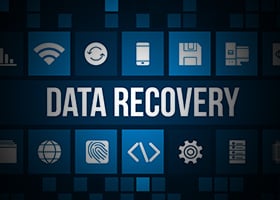 Cloud computing has gone through a total evolution since the first web-based services were launched in the early 2000s. From the very beginning, cloud computing solved a tough business problem: how to use IT infrastructure capacity efficiently. Before the cloud computing infrastructure model was developed, many businesses used only 10% of their capacity.
Cloud computing has gone through a total evolution since the first web-based services were launched in the early 2000s. From the very beginning, cloud computing solved a tough business problem: how to use IT infrastructure capacity efficiently. Before the cloud computing infrastructure model was developed, many businesses used only 10% of their capacity.
Now businesses can run their infrastructures much more efficiently, thanks to cloud computing infrastructure.
As cloud computing is reaching maturity, businesses are taking advantage of new capabilities, services, and economies of scale to:
- Gain competitive advantages, like streamlined operations and faster development cycles.
- Deliver new and better products, services, and customer experiences.
- Improve security to better protect valuable business and consumer data.
Cloud Computing Makes High Availability a Reality for Any Business
Backup and recovery is one area that has undergone a complete evolution as cloud technology has advanced. Before cloud computing became widely available and cost-effective, only enterprise-scale organizations had the resources available to create robust backup and recovery plans.
Prior to cloud computing, a business would have to buy infrastructure and commit IT resources to maintain a high-availability backup and recovery plan. Many small and midsized enterprises couldn’t afford the infrastructure and expertise to support off-site backup, continuous system monitoring, and automatic failover.
The only way to pay for the infrastructure needed was as a capital expense, or CapEx. Many businesses simply lacked the capital for such an expenditure, so disaster recovery plans would end up on their back burners.
With cloud computing, this dynamic has completely changed.
Cloud Computing Has Changed Business Dynamics
 The advent of cloud-based options, including Software as a Service (SaaS) and Infrastructure as a Service (IaaS), has created new possibilities for backup and recovery.
The advent of cloud-based options, including Software as a Service (SaaS) and Infrastructure as a Service (IaaS), has created new possibilities for backup and recovery.
The cloud creates an economy of scale that levels the playing field. It gives businesses of any size access to enterprise-grade backup and recovery options that include:
- Geographically remote backup sites
- 24/7/365 monitoring and issue resolution
- Automated backup and recovery and failover (failback)
- High availability - up to 99.9999%
- The ability to meet security and compliance requirements
Cloud computing enables service providers to pool resources like expertise and infrastructure. With these resource pools in place, providers can then offer customers backup and recovery options such as Disaster Recovery as a Service (DRaaS). Customers can buy a share of these resource pools just as they would other utilities, such as electricity.
In other words, a business can pay for a complete disaster recovery solution as an operating expense (OpEx), or fixed monthly rate.
Shared Responsibility
Many businesses struggle with the responsibility for backup and recovery plans. They may lack the internal expertise to develop plans. In addition, IT resources are often stretched thin, leaving little time for maintaining and updating the plans when they do exist.
With a cloud-based backup and recovery service, responsibility for backup and recovery plans is shared with the service provider. Exact areas of responsibility for both the provider and the company are spelled out in the Service Level Agreement (SLA). For example, established terms will assign responsibility for breach detection, mitigation, and recovery.
Cloud-based backup and recovery solutions offer other benefits too. They are very flexible and adaptable. It’s easy to readjust to scale up or down as business needs change.
Shared Expertise
Another business benefit of cloud-based backup and recovery is access to IT expertise. One of the most brilliant aspects of cloud computing is the economy of scale it creates. Most companies can’t afford a full-time backup and recovery specialist, for example.
However, a cloud service provider focuses exclusively on IT, which means they have high-level experts and specialists on staff. Customers are able to establish relationships with IT experts who can help with all aspects of backup and recovery, including planning, maintenance, and monitoring. A cloud provider can also make sure you meet the compliance requirements for your industry.
Cloud computing has come a long way in a short time. As it has matured newer services, such as cloud-based backup and recovery, affordable and flexible options have come to market.
Learn more about our Cloud Services.




Comment Form